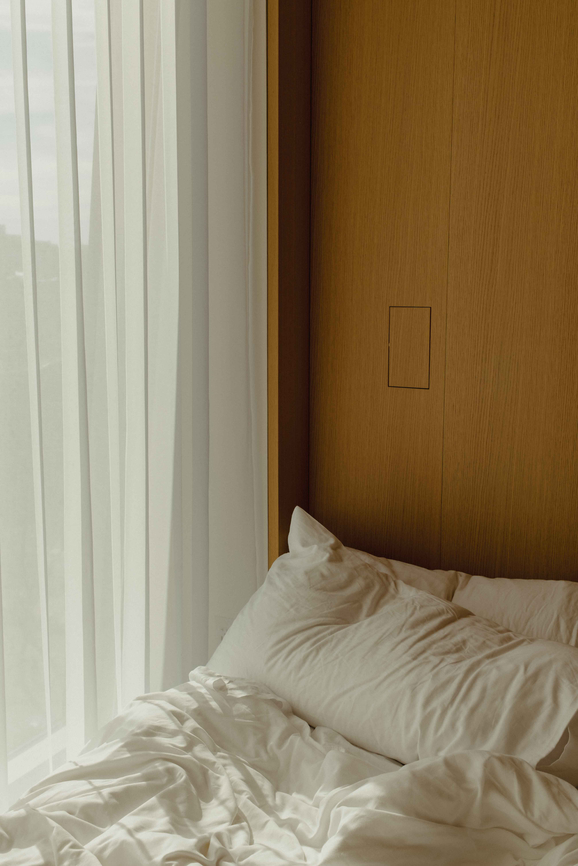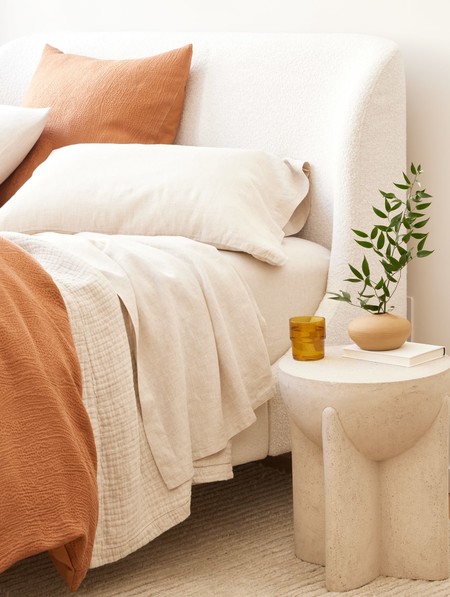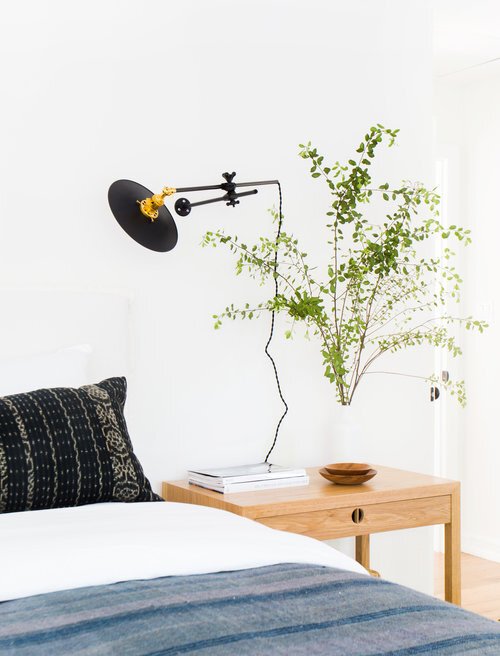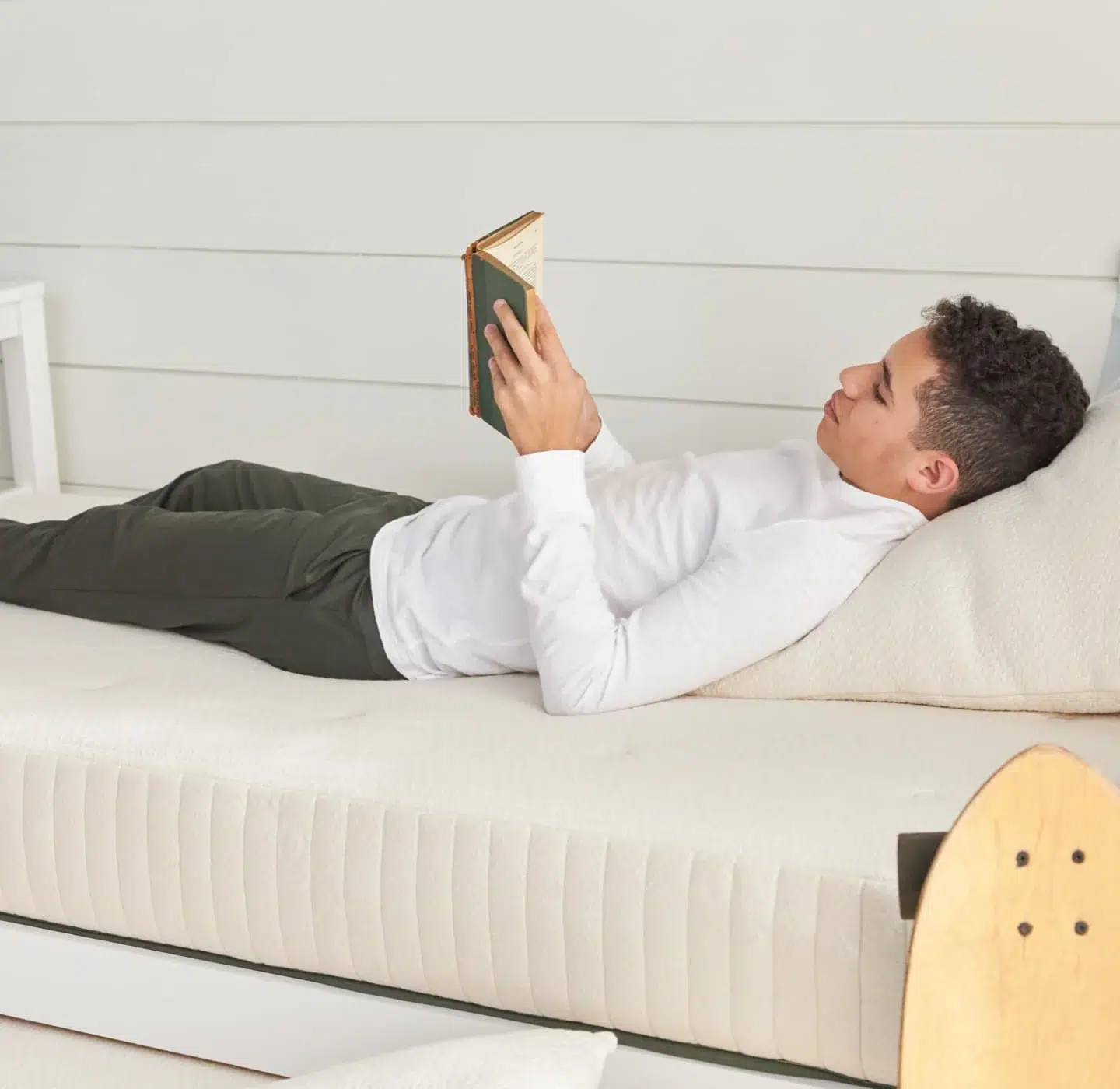
What Are Sheet Thread Counts And Do They Matter?
“What are sheet thread counts, exactly, and how much do they matter?”
When my partner and I moved last year, we invested in new, quality bed sheets to go along with our new place. What should’ve been a simple task turned into hours of research. More went into choosing bed sheets than we thought—material, weave, thread count, brand—and it all became a little overwhelming.
So I recently spoke with an expert from Avocado Green Mattress to help pull back the curtain on one of the most confusing aspects of sheets: thread count. What are sheet thread counts, exactly, and how much do they matter? The answer isn’t perfectly straightforward, but now I know what to look for the next time I’m in the market for new sheets.
What are sheet thread counts?
Simply put, a sheet’s thread count refers to the number of threads in a square inch of fabric. If a sheet has 100 threads running vertically and 100 threads running horizontally in any given one-inch square, then its thread count is 200. In general, the higher a thread count, the softer the sheets will feel—but that isn’t always the case.
To accurately discern a sheet’s thread count, make sure the threads used are single-ply, notes John Davies, Avocado’s senior director of brand editorial & sustainability. When a sheet’s threads are multi-ply, meaning they have two or three fibers in each thread, the thread count will seem high. But in reality, the fabric won’t feel as soft because these multi-ply threads are made of shorter and weaker fibers that must be plied together—making for threads that feel heavier and are more prone to pilling.
Is a higher thread count really better?
In general, yes. While there’s no magic thread count number, you should look for counts of at least 200, and ideally 400, for a sheet that’s both soft and durable. A higher thread count doesn’t always mean a better sheet. Some sheets with a 1,000 thread count are made of multi-ply threads, prone to pilling and making your sheets feel rougher, or made of low-quality materials like polyester.
Avocado makes two types of sheets: their Organic Cotton Sheets that come in 400 and 600 thread counts, and their Organic Superfine Suvin Cotton Sheets which come in 600 and 1,000 counts. Their most popular sheet, says Davies, is their “affordable, certified organic 400 thread count Organic Cotton Sheet.” With the lowest thread count of all their sheets, the organic cotton’s breathability and single-ply threads still make it exceptionally soft and comfortable, especially for folks who sleep warm.
“A higher thread count doesn’t always mean a better sheet.”
Suvin cotton, however, has a super long fiber length. It’s one of India’s rarest heritage cotton varieties for its extra long staple (ELS) fibers. “Suvin’s 38 to 40 millimeter fiber length puts it leagues ahead of other cottons,” says Davies, allowing it to be woven into higher, single-ply thread counts without pilling or feeling too tight or rough. “As the yarn becomes longer and finer, it develops a more luxurious feel and a silky pearlescent luster — not to mention increased durability.”
So basically, a super high, 1,000 thread count sheet is only the best option if it’s made from high-quality, single-ply cotton with long fibers like Suvin. Other long-fiber cottons, says Davies, include Pima cotton and Egyptian cotton.
Sheet material vs. weave vs. thread count
Keep in mind that sheet material matters just as much if not more than thread count when it comes to feel. Cotton remains on top—it’s natural, breathable, and as long as it’s organic, it’s one of the most sustainable fabrics on the market. Microfiber or polyester sheets aren’t ideal, even if their thread counts are higher, because they won’t feel as breathable as cotton.
“Sheet material matters just as much if not more than thread count when it comes to feel.”
Hemp and linen are also sustainable, natural options. They require less water to produce than cotton, they’re highly breathable and durable, and they soften each time they’re washed. Thread count doesn’t matter so much for linen and hemp—in fact, sometimes it’s not even listed, because higher thread counts will make these sheets feel too stiff.
Another factor to consider? Weave—and this one comes down to personal preference. Percale sheets use a plain weave, meaning one thread over, one thread under, resulting in a crisp, durable sheet. Sateen weaves use a four over, one under pattern, so these sheets have a silkier feel and a higher thread count—but they’re not always as durable or as breathable.
The final word on thread count
The biggest sheet thread count takeaway: Look at sheets as a whole, not just at their thread counts. If softness is a top priority, you should look for sheets with a thread count of 200 or more. However, while thread count generally indicates the quality and softness of a sheet, be wary of high thread counts made from multi-ply or lower quality fibers. Instead, look for natural materials.
“Look at sheets as a whole, not just at their thread counts.”
“When it comes to breathability and thermoregulation, no material can outperform high quality, certified organic cotton, hemp, and linen sheets,” says Davies.
The decision ultimately depends on your budget and how you like your sheets to feel. Our best advice? Look for sheets made from natural materials from trusted, respected brands with lots of good reviews.
Natalie Gale is a Boston-based freelance journalist. When she’s not writing about art, food, or sustainability, you can find her biking to the farmers’ market, baking, sewing, or planning her next Halloween costume. Say hi on Instagram!




